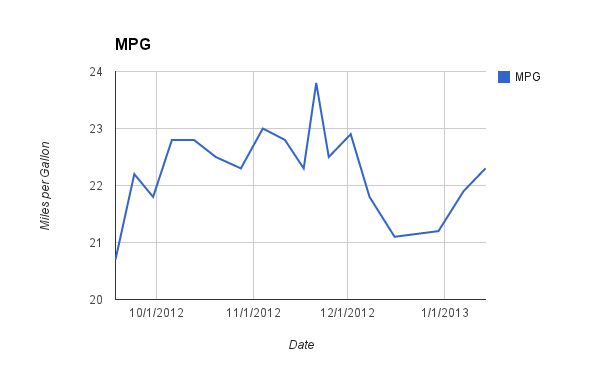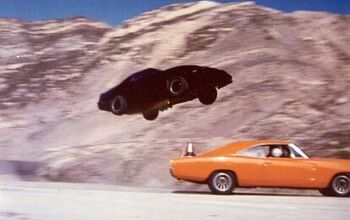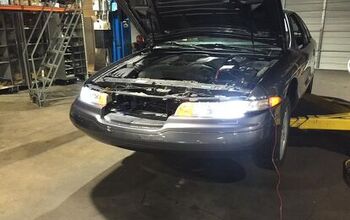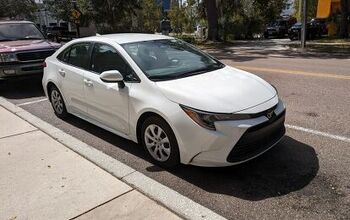Piston Slap: Charting the Changes, To What End?

TTAC commentator wannabewannabe writes:
Hey Sajeev,
I wrote you a while back about my 1990 Chevy pickup, but I’ve since moved on to more interesting cars.
I have a 1994 Cadillac Fleetwood Brougham (B/D-Body with an LT1 FTW!) that looks literally identical to this one, same color inside and out. It currently has just under 184k miles on it, is my daily driver, and is in pretty good shape. Very reliable car!
My question concerns fuel economy, and it’s stumped me. I commute between 75-80 miles round trip every day, which makes my weekly mileage about 400 miles, so I fill up once a week. I always fill up at the same gas station, I drive the same routes on the same days, no one else drives my car, and because my commute is mostly freeway, I’m a copious user of cruise control. Also, I should mention that because I live in the Bay Area in California, our weather doesn’t vary wildly; it’s usually relatively mild. Yet given all this, my gas mileage routine varies up to 15%. Some weeks I average about 21mpg, while other weeks I average about 24mpg. To be fair, the average is in the 22.5mpg range, and you’ll see a good number of data points there too.
I would expect some variation based on the automatic shut off on the pumps and to a certain degree, variances in temperature, particularly when filling up, but I’m surprised that my fuel economy swings as much as it does. I’ve included a rudimentary chart to show you the swings, though it doesn’t have the last month of data included. Thoughts?
Sajeev answers:
Nice rig! You’ve certainly done a great job explaining your situation..and is it ever a doosie!
The most logical choice, given your input, is the gas pumps do shut off at different “full” levels. Perhaps there’s something wrong with your Caddy’s vapor recovery system that’s making it happen. Usually that throws a trouble code and a light on the dash, so probably not applicable here.
Perhaps the weather may feel about the same, but the problem is exacerbated by a change in barometric pressure? Is that even possible?
If, by any chance, you haven’t changed your Oxygen (o2) Sensors, do it! The engine computer is only as efficient as the information it receives. And flaky sensors could cause the variance we see here, especially if they are original at this mileage. Worn out, but not enough to throw a trouble code. It’s possible!
The O2 sensors sound more likely, the more I ponder this. Off to you, Best and Brightest!
Send your queries to sajeev@thetruthaboutcars.com. Spare no details and ask for a speedy resolution if you’re in a hurry…but be realistic, and use your make/model specific forums instead of TTAC for more timely advice.

More by Sajeev Mehta
Latest Car Reviews
Read moreLatest Product Reviews
Read moreRecent Comments
- Lorenzo Yes, they can recover from the Ghosn-led corporate types who cheapened vehicles in the worst ways, including quality control. In the early to mid-1990s Nissan had efficient engines, and reliable drivetrains in well-assembled, fairly durable vehicles. They can do it again, but the Japanese government will have to help Nissan extricate itself from the "Alliance". It's too bad Japan didn't have a George Washington to warn about entangling alliances!
- Slavuta Nissan + profitability = cheap crap
- ToolGuy Why would they change the grille?
- Oberkanone Nissan proved it can skillfully put new frosting on an old cake with Frontier and Z. Yet, Nissan dealers are so broken they are not good at selling the Frontier. Z production is so minimal I've yet to see one. Could Nissan boost sales? Sure. I've heard Nissan plans to regain share at the low end of the market. Kicks, Versa and lower priced trims of their mainstream SUV's. I just don't see dealerships being motivated to support this effort. Nissan is just about as exciting and compelling as a CVT.
- ToolGuy Anyone who knows, is this the (preliminary) work of the Ford Skunk Works?


































Comments
Join the conversation
Easy way around the pump shut-off issue is to track it by gallons per fill, and mileage between fills. A "fill" is however much you put in; doesn't have to be a top-off.
I also live in the Bay Area and I also keep a log book of mileage (and other car-related odds-and-ends). I think your problem is the automatic shutoff system of gas pumps. I've noticed that if I lock the gas pump nozzle to maximum fill speed it usually stops short. Usually it's between 0.5 and 2 gallons short but sometimes it'll just stop anywhere. That could entirely explain your inconsistent results. While fueling I try to estimate how many gallons I'll need based on miles traveled, expected fuel efficiency, gas gauge reading, and the car's own estimation of miles remaining until empty. Then, when I'm 2 gallons shy of full I reduce the nozzle fill speed to the slowest speed and also hold the nozzle more upright. That seems to result in consistent fills.